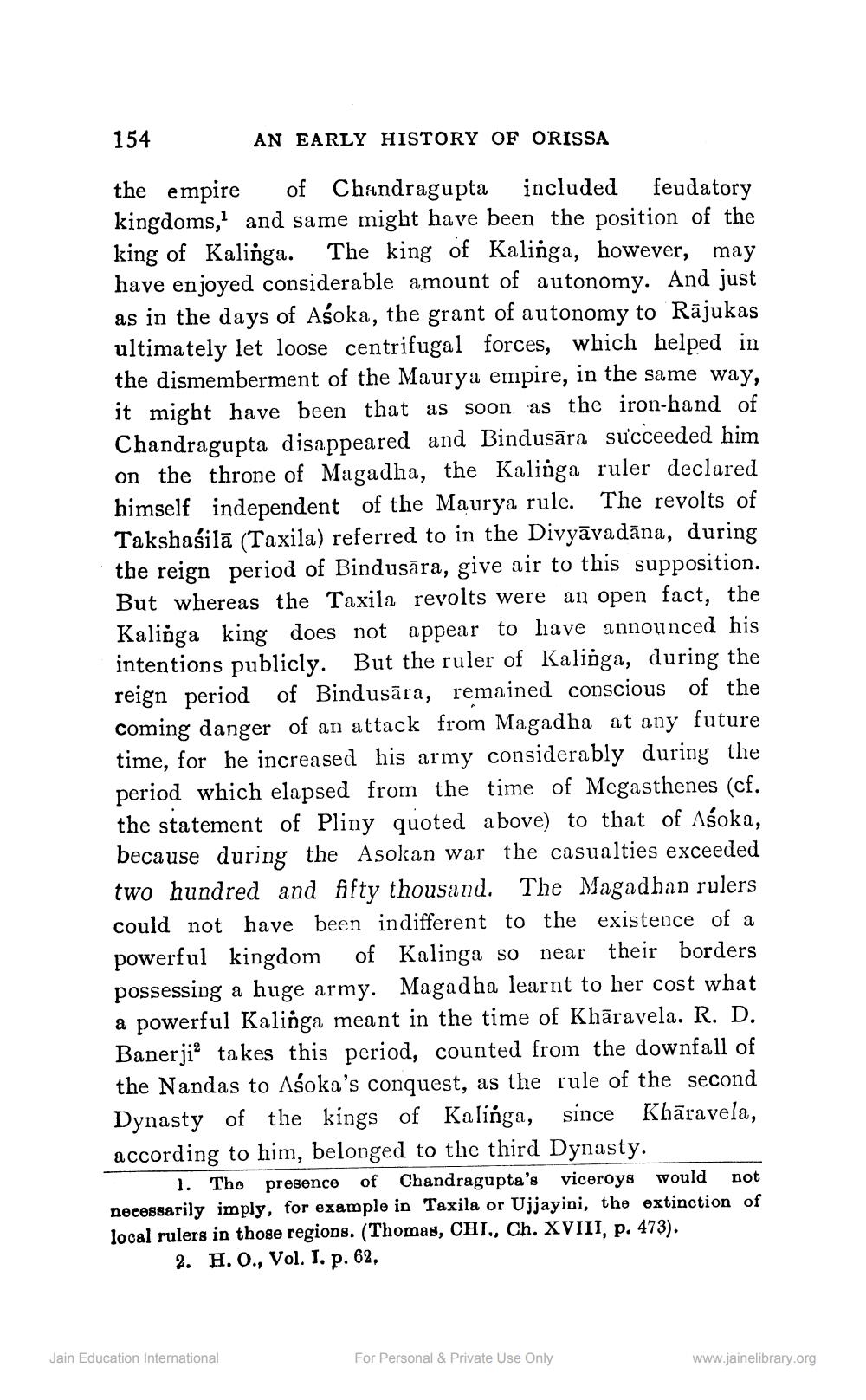________________
154
AN EARLY HISTORY OF ORISSA
the empire of Chandragupta included feudatory kingdoms, and same might have been the position of the king of Kalinga. The king of Kalinga, however, may have enjoyed considerable amount of autonomy. And just as in the days of Asoka, the grant of autonomy to Rājukas ultimately let loose centrifugal forces, which helped in the dismemberment of the Maurya empire, in the same way, it might have been that as soon as the iron-hand of Chandragupta disappeared and Bindusāra succeeded him on the throne of Magadha, the Kaliiga ruler declared himself independent of the Maurya rule. The revolts of Takshasilā (Taxila) referred to in the Divyāvadāna, during the reign period of Bindusāra, give air to this supposition. But whereas the Taxila revolts were an open fact, the Kalinga king does not appear to have announced his intentions publicly. But the ruler of Kalinga, during the reign period of Bindusāra, remained conscious of the coming danger of an attack from Magadha at any future time, for he increased his army considerably during the period which elapsed from the time of Megasthenes (cf. the statement of Pliny quoted above) to that of Asoka, because during the Asokan war the casualties exceeded two hundred and fifty thousand. The Magadhan rulers could not have been indifferent to the existence of a powerful kingdom of Kalinga so near their borders possessing a huge army. Magadha learnt to her cost what a powerful Kalinga meant in the time of Khāravela. R. D. Banerji? takes this period, counted from the downfall of the Nandas to Aśoka's conquest, as the rule of the second Dynasty of the kings of Kalinga, since Khāravela, according to him, belonged to the third Dynasty.
1. Tho presence of Chandragupta's viceroys would not necessarily imply, for example in Taxila or Ujjayini, the extinction of local rulers in those regions. (Thomas, CHI, Ch. XVIII, p. 473).
2. H. O., Vol. I. p. 62,
Jain Education International
For Personal & Private Use Only
www.jainelibrary.org




